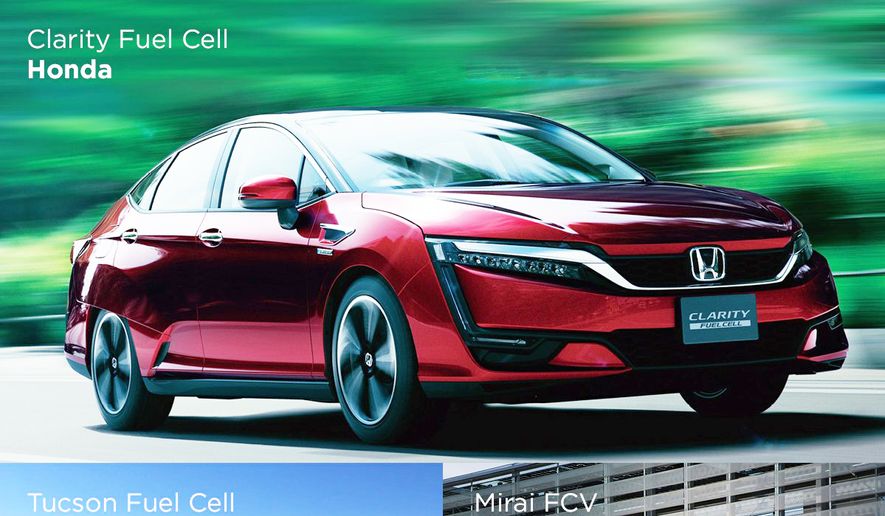America appears divided about almost everything, but there are three generally accepted goals that transcend partisanship: energy independence, environmental stewardship and America’s economic security. Today’s rapidly growing fuel cell industry plays a role in achieving all three — a true Triple Crown contender.
Fuel cells generate power through a chemical process using hydrogen or hydrogen-rich fuels, such as domestic natural gas, biogas, solar or wind power. They enhance America’s energy security and keep energy dollars at home.
Unlike other energy technologies that have shipped production overseas, the largest fuel cell companies continue to design and manufacture their products in the U.S., exporting to foreign customers, while creating jobs and expanding opportunities for American workers.
Automakers have invested billions of dollars in fuel cell vehicles (FCVs) and hydrogen technologies. Working with America’s energy and gas companies, they also are contributing to the building of a hydrogen infrastructure.
Zero-emission FCVs are on California’s roads today. They are being embraced by consumers because they replicate today’s driver’s experience of driving 300400 miles on a tankful of hydrogen, and equally important, refueling in just three to five minutes. Californians can choose from multiple models, and drivers in the Northeast will see this amazing technology on their highways in the not too distant future.
Retail FCV fueling stations in California are similar to existing gasoline stations. FCV owners simply pull up to a hydrogen pump, swipe a credit card, and are back on the road in minutes, emitting only water from their tailpipes. On the East Coast, Toyota is partnering with industrial gas leader, Air Liquide, to build an initial hydrogen station network connecting New York City and Boston, the first stations of which will be operating by the end of the year.
One of the most exciting markets for fuel cells is in material handling, where fuel cell forklift sales are setting a fast pace. Unlike battery forklifts, fuel cell models suffer no downtime for battery replacement or recharging. Instead, workers pull up to a small hydrogen dispenser, refuel quickly and are back on the floor in minutes, increasing overall productivity. Some of the nation’s largest retail companies such as Amazon, Home Depot and Walmart are pioneer adopters of fuel cells for their logistics and distribution centers to meet their energy efficiency goals, save money and increase productivity.
Additionally, leading technology companies, such as Apple, Google and eBay, as well as major utilities are increasingly turning to fuel cell systems for primary and back-up power for their facilities, substations, cell towers and data centers. Quiet, efficient, reliable and scalable — fuel cells are installed on-site to provide efficient power without the noise, pollution and high maintenance of traditional power generation.
Typically connected to our nation’s natural gas pipelines, stationary fuel cell systems continue to operate even when the utility grid is unavailable, and are installed at hospitals, schools and grocery stores, among other sites. Through Hurricane Sandy and other northeastern storms, fuel cells proved reliable, powering through when the grid failed. The military, railroads, and oil and gas field companies also rely on fuel cells to power their off-grid equipment.
However, the continued growth and success of the fuel cell industry cannot be taken for granted. Fuel cell technology has made great strides from small but vital R&D assistance from the U.S. Department of Energy, which has helped build an impressive track record of industry milestones, produced U.S. patents and encouraged private investment.
The industry has also benefitted from incentives to help develop early markets. While tax credits were allowed to expire for fuel cells, far greater federal tax assistance remains in place for wind, solar, battery-electric vehicles and other technologies.
America’s fuel cell industry is like a thoroughbred, and the members of the Fuel Cell and Hydrogen Energy Association are proud of what has been accomplished thus far. Other nations are betting heavily on their own fuel cell industries to jockey for a leading position, but we believe the U.S. can win the big energy race down the stretch. It is up to all of us in Washington and across the country to make sure that we do not place our bets on just one horse. Without government-imposed handicaps, we stand ready to help America achieve the Triple Crown of energy independence, environmental stewardship and economic security, making us all winners.
• Morry Markowitz is President of the Fuel Cell and Hydrogen Energy Association.




Please read our comment policy before commenting.